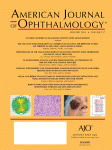Scopo della ricerca è di valutare l’efficacia del laser trabeculoplastica selettiva – SLT nel prevenire i rialzi pressori che si hanno in seguito alla somministrazione intravitreale di triamcinolone.
Lo studio ha seguito 31 occhi di 31 pazienti, divisi in due gruppi: nel primo i pazienti ricevevano il trattamento con SLT circa una settimana prima di essere sottoposti all’iniezione, nel secondo (16 occhi) non veniva praticata la terapia preventiva.
I risultati hanno mostrato che in tutte le visite di controllo, a 1 giorno, 1 settimana e 6 mesi, i pazienti del gruppo pretrattato avevano valori di pressione media inferiori rispetto al gruppo non trattato.
Altro dato significativo è che nessun occhio del primo gruppo necessitava di terapia antiglaucomatosa in gocce, mentre 8 su 16 del secondo gruppo dovevano farvi ricorso.
Le conclusioni di questo studio confermano l’efficacia dell’SLT nel prevenire i rialzi pressori dopo iniezioni intravitreali di cortisone ed aggiunge una utile applicazione a questa metodica, il laser selettivo per il glaucoma, SLT, che, negli ultimi anni, ha conquistato un posto di primo piano nelle terapie innovative del glaucoma.
Ercument Bazkurt e coll.
American Journal of Ophthalmology
December 2011, Volume 152, Issue 6, p889-1086
Purpose To evaluate the prophylactic efficacy of selective laser trabeculoplasty for preventing an increase in intraocular pressure (IOP) after intravitreal triamcinolone acetonide injection.
Design Prospective, comparative, interventional case series.
Methods We studied 31 eyes with a baseline IOP of 21 mm Hg or more of 31 patients for which intravitreal triamcinolone acetonide injection was planned for diabetic macular edema. The patients were divided into 2 groups, a study group and control group. The study group comprised 15 eyes of 15 patients that underwent selective laser trabeculoplasty a mean of 8.3 ± 4.1 days before intravitreal triamcinolone acetonide injection. The control group comprised 16 eyes of 16 patients who underwent only intravitreal triamcinolone acetonide injection. Main outcomes measures were mean IOP and number of patients requiring antiglaucomatous therapy.
Results Mean baseline IOP was 21.6 ± 0.9 mm Hg in the study group and 21.5 ± 0.8 mm Hg in the control group (P = .98). Mean IOP at 1 day after injection was 17.0 ± 2.0 mm Hg in the study group and 19.5 ± 4.3 mm Hg in the control group (P = .23). Mean IOP at 1 week after injection was 16.9 ± 1.7 mm Hg and 18.4 ± 4.0 mm Hg, respectively (P = .49); mean IOP at 1 month after injection was 16.4 ± 1.5 mm Hg and 20.8 ± 5.6 mm Hg, respectively (P = .003); mean IOP at 3 months after injection was 15.8 ± 2.5 mm Hg and 18.3 ± 5.5 mm Hg, respectively (P = .01); and mean IOP at 6 months after injection was 15.7 ± 1.4 mm Hg and 17.1 ± 1.5 mm Hg, respectively (P = .03). The number of patients requiring antiglaucomatous therapy during follow-up was 0 of 15 eyes in the study group and 8 of 16 eyes in the control group (P = .001).
Conclusions The IOP elevation after intravitreal triamcinolone acetonide injection may be prevented by performing selective laser trabeculoplasty before intravitreal triamcinolone acetonide injection, especially in cases with a baseline IOP of 21 mm Hg or more.

 Prophylactic Selective Laser Trabeculoplasty in the Prevention of Intraocular Pressure Elevation after Intravitreal Triamcinolone Acetonide Injection
Prophylactic Selective Laser Trabeculoplasty in the Prevention of Intraocular Pressure Elevation after Intravitreal Triamcinolone Acetonide Injection